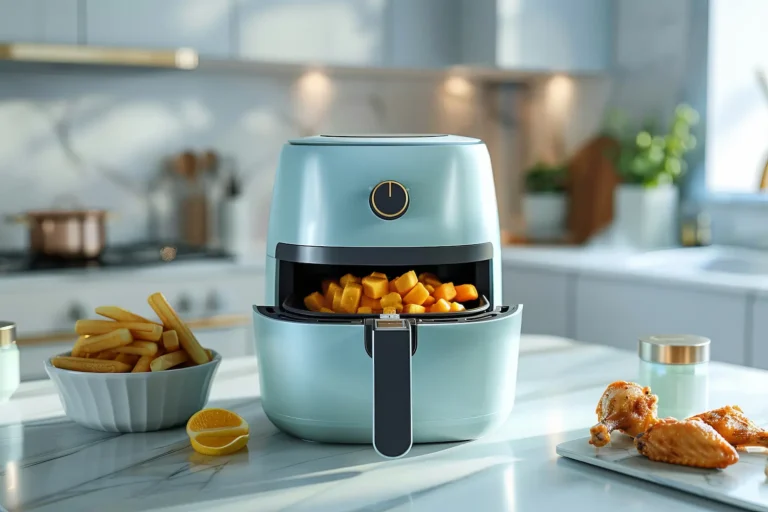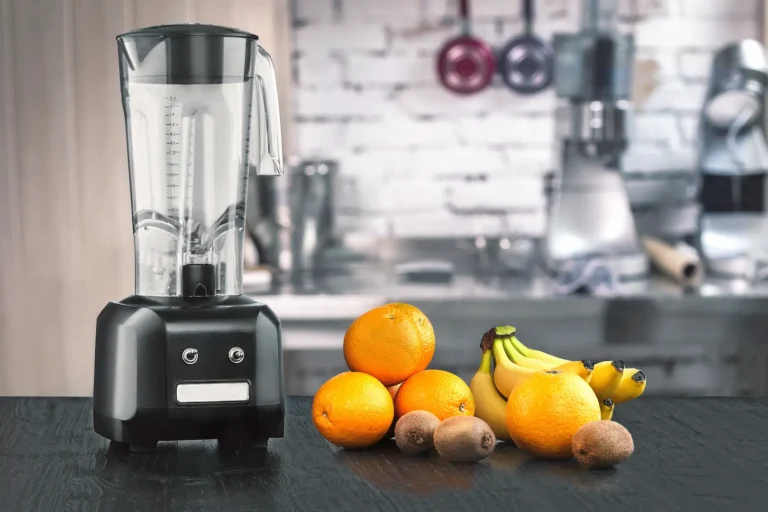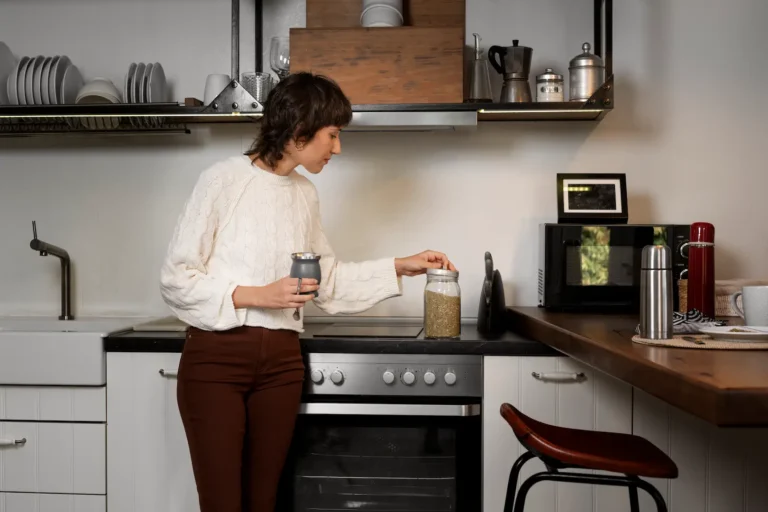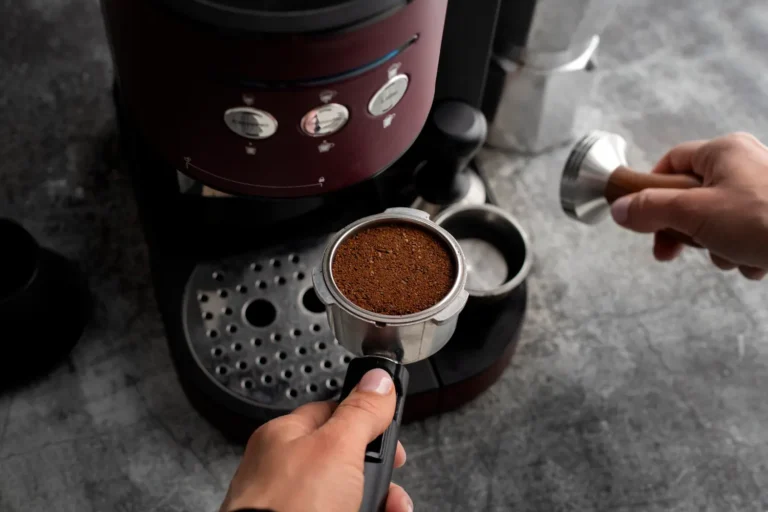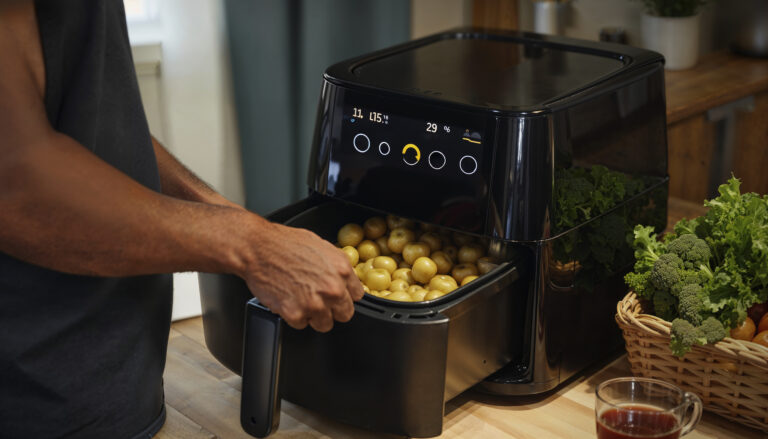How to Choose the Right Blender for Smoothies: Expert Guide for 2025
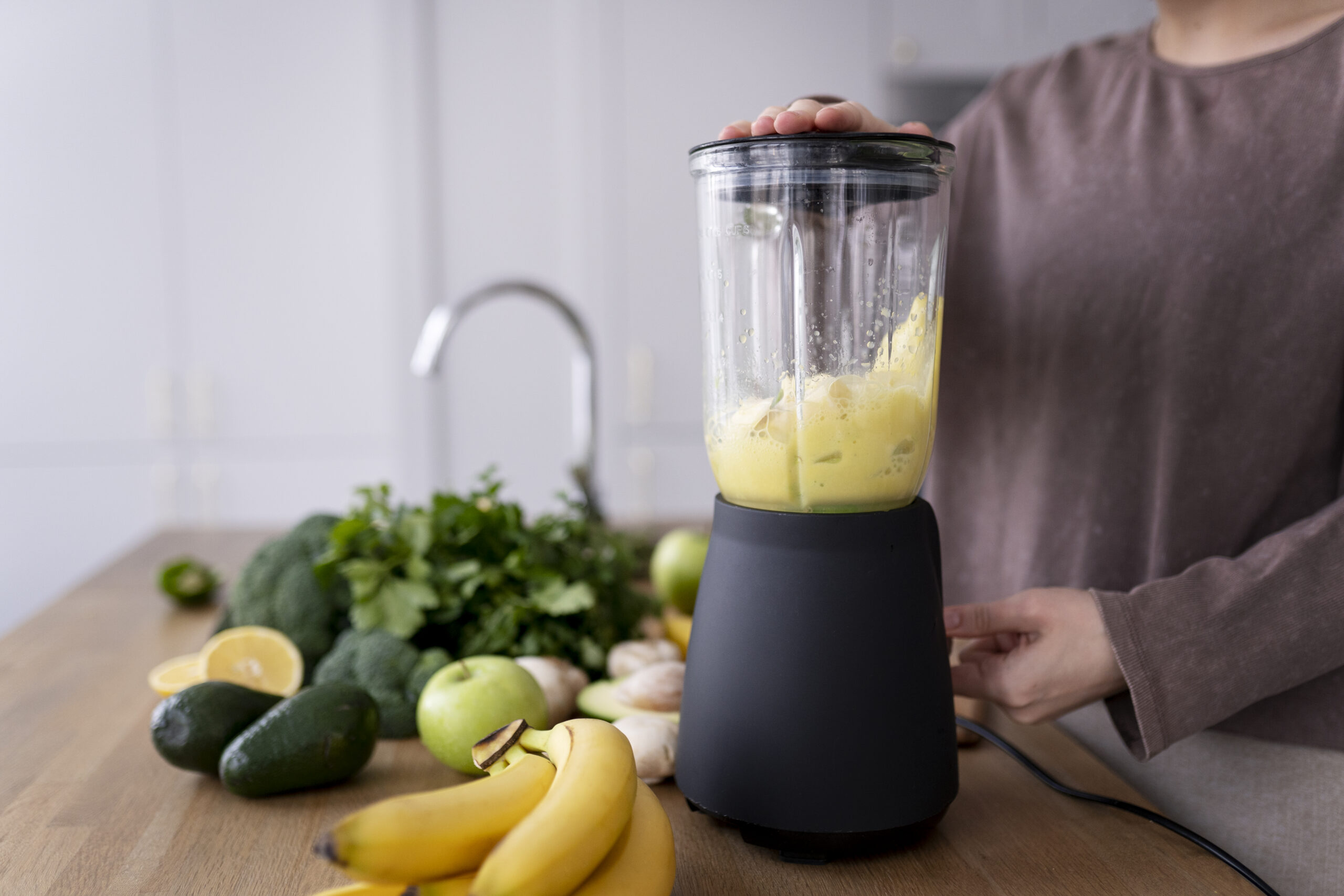
If a fresh smoothie is part of your daily routine, then investing in the right blender can make all the difference. From crushing frozen blueberries to blending fibrous kale leaves, a quality smoothie blender saves time, reduces frustration, and guarantees a silky-smooth drink every single time. With dozens of options available, how do you know which blender is worth your money?
Smoothies aren’t just a fad anymore—they’ve become a lifestyle choice. Whether it’s for breakfast, a post-gym boost, or a quick meal replacement, smoothies offer a convenient way to pack nutrients into your day. But here’s the catch: your blender makes or breaks your smoothie experience.
A cheap, underpowered blender might leave you sipping on lumpy kale strands or struggling to chew frozen fruit chunks. On the other hand, the right blender ensures silky-smooth consistency, durability, and ease of use—making it a worthwhile kitchen investment.
The Rise of Smoothies in Daily Nutrition
Why Smoothies Are More Than Just a Trend
Over the last decade, smoothies have shifted from being a wellness trend to a daily staple. Their versatility is unmatched—you can make them fruity, green, high-protein, or even dessert-like.
Benefits of Smoothies for Health and Lifestyle
- Nutrient-rich: Pack in fruits, vegetables, protein powders, and superfoods.
- Convenient: Quick to prepare and easy to consume on the go.
- Customizable: Suitable for weight loss, muscle gain, or general wellness.
- Digestive-friendly: Blending helps break down fiber, making nutrients more accessible.
The Role of Blenders in Everyday Wellness
A high-quality blender doesn’t just make smoothies—it supports your health journey. From protein shakes to soups and nut butters, a blender is one of the most versatile tools in the modern kitchen.
Common Problems with Low-Quality Blenders
Inconsistent Blending and Lumpy Textures
Cheap blenders often lack the power to fully crush ice or break down fibrous greens. The result? Gritty smoothies with unpleasant chunks.
Overheating, Burnt Motors, and Short Lifespan
Many low-cost models overheat quickly, especially when blending frozen fruit. This not only limits their functionality but also shortens their lifespan.
Wasted Ingredients and Frustration
When your blender can’t handle tough ingredients, you end up wasting food and money. Plus, the frustration of scraping unblended bits off the jar can turn smoothie-making into a chore.
Key Features to Look for in a Smoothie Blender
Motor Power and Wattage Explained
Blender power is measured in watts, and it determines how well the machine can handle hard or frozen ingredients.
Best Wattage Range for Crushing Ice and Frozen Fruit
- 600–900 watts: Good for soft fruits and basic smoothies.
- 1,000–1,200 watts: Ideal for crushing ice, nuts, and frozen produce.
- 1,500+ watts: Professional-grade, perfect for heavy daily use and fibrous ingredients like kale or ginger.
Blade Design and Material
Look for stainless steel blades with an angled or multi-level design. These create a vortex effect, pulling ingredients down for a smoother, more even blend.
Jar Size and Capacity Options
Personal Blenders vs. Full-Sized Blenders
- Personal jars (16–24 oz): Best for single-serve smoothies.
- Medium jars (32–48 oz): Great for couples or small households.
- Large jars (64+ oz): Perfect for families or batch-prepping smoothies.
Speed Settings and Preset Programs
A variety of speed settings give you more control. Preset programs—like “Smoothie” or “Ice Crush”—add convenience with one-touch blending.
Noise Level and Build Quality
Some high-power blenders sound like jet engines. If you live in an apartment or make smoothies early in the morning, consider quieter models such as the Hamilton Beach Professional Quiet Blender.
Ease of Cleaning and Maintenance
- Auto-clean functions save time.
- Dishwasher-safe jars are a must for busy lifestyles.
- Wide, rounded jars clean more easily than narrow ones with sharp corners.
Best Types of Blenders for Smoothies
When it comes to making the perfect smoothie, not all blenders are created equal. The right choice depends on your lifestyle, budget, and how often you’ll be blending. Here’s a closer look at the main categories of blenders and the top picks for 2025.
High-Performance Blenders (Vitamix, Breville, Blendtec)
If you’re serious about smoothies—or any kind of blending—high-performance blenders are in a league of their own. These models pack professional-grade motors, often exceeding 1,500 watts, and feature precision-engineered blades that can handle anything from frozen strawberries to kale stems with ease.
- What makes them stand out?
- Effortless blending of fibrous greens, nuts, and seeds.
- Long lifespans, often lasting 7–10 years or more with proper care.
- Versatility—they can also make soups, nut butters, and even grind grains.
The trade-off is the premium price tag, but for smoothie enthusiasts, athletes, or families who blend daily, the investment pays off in both performance and durability.
Mid-Range Blenders (KitchenAid, Ninja)
For most households, mid-range blenders strike the perfect balance between cost and capability. With motors typically in the 1,000–1,200 watt range, they’re powerful enough for frozen fruits and ice while still being more affordable than high-end models.
- Why choose mid-range?
- Strong performance at a reasonable price.
- Stylish designs that fit modern kitchens.
- Suitable for daily smoothie-making without breaking the bank.
These blenders are ideal for families who want consistent smoothies but don’t need restaurant-grade power.
Budget-Friendly Blenders (NutriBullet, Black+Decker)
Not everyone needs or wants to spend big on a blender. For beginners or occasional smoothie drinkers, budget-friendly blenders are a practical choice.
- Pros: Affordable, compact, and easy to use.
- Cons: They may struggle with harder ingredients like frozen pineapple or kale and aren’t designed for frequent heavy use.
Still, for the price, they’re perfect for simple fruit-based smoothies or protein shakes.
Compact and Personal Smoothie Blenders
If convenience is your top priority, personal blenders are a game-changer. Compact and portable, they usually come with blend-and-go cups, making them perfect for busy mornings or post-gym shakes.
- Best for: Students, professionals, or anyone who wants quick, single-serve smoothies without the hassle of a bulky appliance.
- Limitations: Smaller capacity and not ideal for batch prepping.
These are excellent secondary blenders to complement a larger household model.
Top Blender Recommendations for 2025
After reviewing performance, price, and durability, here are the top picks for smoothie lovers in 2025:
- Best Overall: Breville Fresh & Furious Blender
With intuitive controls, a sleek stainless steel design, and dedicated smoothie settings, this blender is a top all-rounder that delivers consistent results. - Best for Thick Smoothies: Vitamix Propel 510
Designed with pro-level blending power, this machine crushes fibrous greens and frozen produce into silky perfection, making it a top choice for green smoothie enthusiasts. - Best Budget Pick: KitchenAid K150
Compact, stylish, and surprisingly powerful for its price point, the K150 is great for those who want quality without overspending. - Best for Large Batches: KitchenAid K400
With its 56-ounce capacity, this blender is ideal for families or anyone who preps smoothies in bulk. It handles frozen fruit and ice with ease. - Best Personal Blender: Ninja Nutri-Blender Plus
A small but mighty option with to-go cups included. Perfect for single servings and those who want smoothies on the run.
Expert Tips for Blending the Perfect Smoothie
Making a smoothie seems simple—just toss everything into a blender and press a button, right? But if you’ve ever ended up with a chunky, watery, or overly pulpy drink, you know there’s more to it than meets the eye. The good news is, with the right technique, you can consistently create silky, flavorful smoothies that rival any juice bar. Here are some expert-approved tips to elevate your blending game:
1. Layer Ingredients for Smooth Blending
The order in which you add ingredients makes a big difference. Start with the liquid base—water, milk, almond milk, or juice—at the bottom. This helps the blades create a vortex that pulls everything down. Next, add soft fruits like bananas or berries, then leafy greens such as spinach or kale, and finally place frozen items or ice on top.
👉 This layering method prevents jams, reduces strain on the motor, and ensures even blending.
2. Blend Time: Find the Sweet Spot
Most smoothies don’t need endless blending. Around 45–60 seconds is usually enough for a creamy consistency. Over-blending can warm the drink slightly and affect texture, while under-blending leaves chunks behind.
Pro Tip: If you’re using a high-powered blender like a Vitamix or Blendtec, you might only need 30–45 seconds for a perfectly smooth result.
3. Reduce Pulp for a Silky Texture
Not everyone loves texture in their smoothie. If you prefer a juice-bar style drink, you can strain your smoothie through a fine mesh strainer or nut milk bag to remove excess pulp. This is especially helpful with fibrous greens, seeds, or fruit with skins.
4. Balance Flavors for the Best Taste
A smoothie can quickly turn bitter if you overload it with greens or tart fruit. The key is balance:
- Use one sweet fruit (like mango, banana, or pineapple) to offset bitterness.
- Add a splash of citrus juice for brightness.
- A teaspoon of honey, dates, or maple syrup can sweeten naturally if needed.
5. Add Boosters the Smart Way
Want more nutrition in your smoothie? Add-ons like protein powder, chia seeds, flaxseed, or nut butters are fantastic—but add them after the soft fruits so they blend evenly. Powders especially can clump if tossed in too early without enough liquid.
6. Adjust Consistency Like a Pro
If your smoothie is too thick, add extra liquid a little at a time. If it’s too thin, toss in frozen fruit, avocado, or a handful of oats for a creamier texture. The goal is to achieve a drinkable yet satisfying consistency.
7. Keep It Cold Without Dilution
Instead of loading up on ice (which can water down flavor), freeze fruits like bananas, mangoes, and strawberries ahead of time. This keeps your smoothie cold, creamy, and flavorful without losing intensity.
8. Clean the Blender Immediately
A pro tip that saves time: rinse or run the blender with warm water and a drop of dish soap right after use. Dried fruit pulp and seeds can be a nightmare to scrub later.
FAQs on Choosing the Right Blender for Smoothies
Conclusion: Finding the Perfect Smoothie Blender
Choosing the right blender for smoothies depends on your lifestyle, budget, and blending habits. If you need professional-grade performance, Vitamix is unbeatable. For stylish affordability, KitchenAid offers excellent mid-range options. And if convenience is key, Ninja’s personal blenders deliver single-serve smoothies in seconds.
With the right choice, every smoothie you make will be smooth, delicious, and hassle-free.

